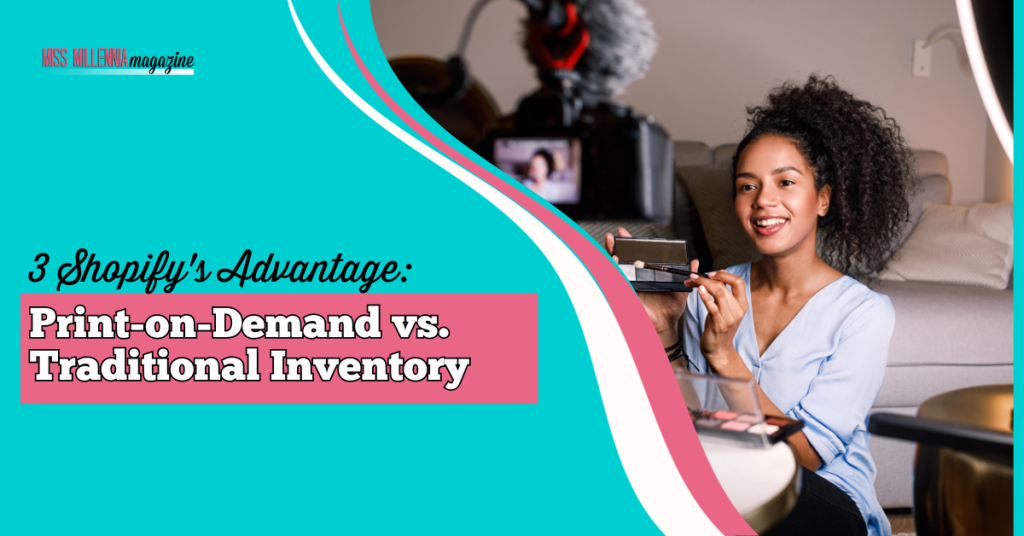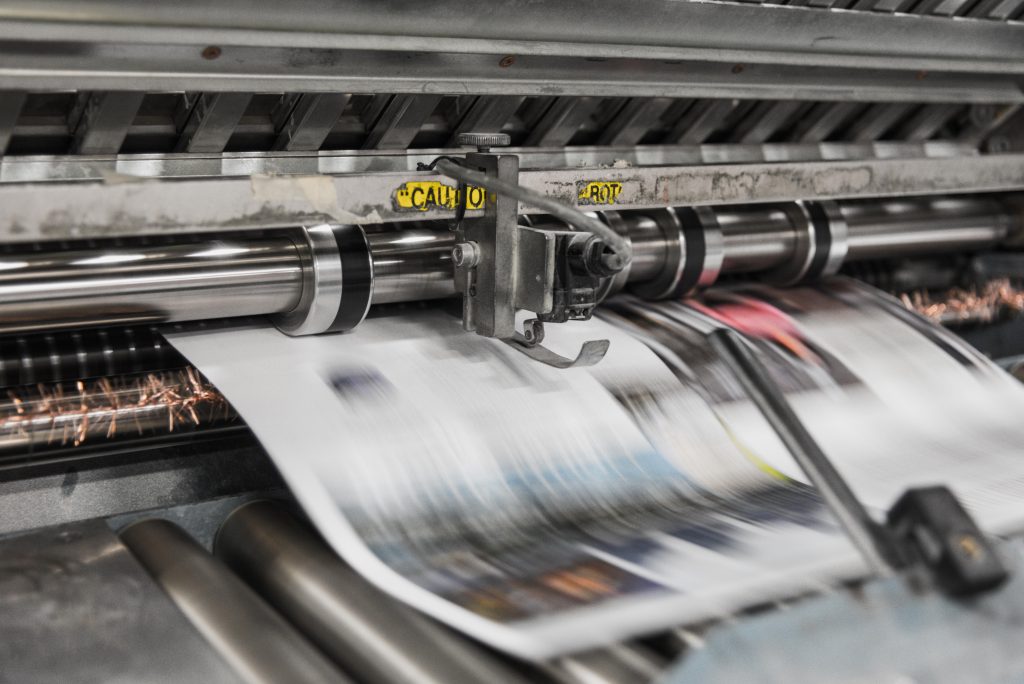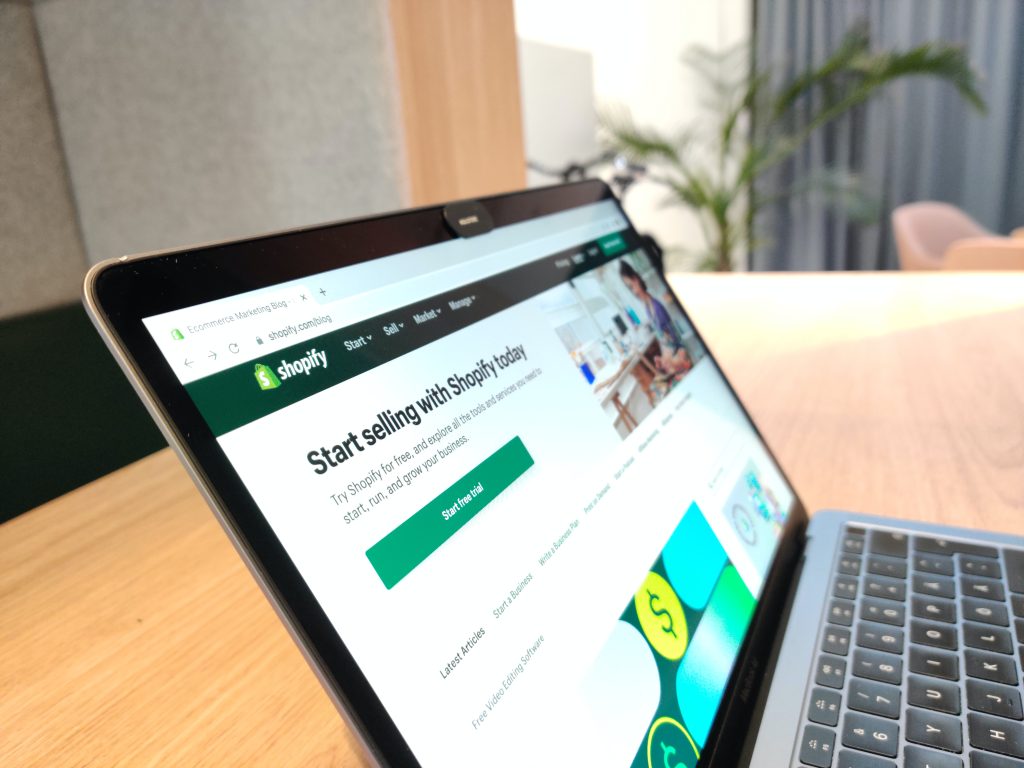3 Shopify’s Advantage: Print-on-Demand vs. Traditional Inventory

Business entrepreneurs are constantly seeking ways to streamline their operations, cut down on costs, and boost their profit margins. Among the decisions they face is whether to opt for print-on-demand (POD) or traditional inventory. While both approaches have advantages and disadvantages, Shopify holds an advantage by allowing users to choose between them.
For those looking to harness the potential of print-on-demand within the Shopify ecosystem, the integration of print-on-demand services, commonly referred to as “print-on-demand Shopify integration,” emerges as a transformative tool. This integration allows entrepreneurs to effortlessly merge their creative designs and product offerings with Shopify’s robust e-commerce infrastructure, opening up new avenues for revenue generation and customer engagement. The synergy between print-on-demand and Shopify creates a potent combination that caters to the evolving needs of modern businesses, enabling them to thrive in an ever-evolving marketplace.
What is Print on Demand?
Print on demand (POD) is a fulfillment model that empowers entrepreneurs to manufacture and dispatch products when an order has been placed. This method eliminates the need for entrepreneurs to maintain an inventory of goods, thereby reducing costs and mitigating risks associated with stock.
Through POD services, entrepreneurs can sell products like t-shirts, mugs, phone cases, and other customized items that may not be readily available through traditional inventory methods. They upload their designs, logos, or artwork onto a platform, where they are printed onto products before being directly shipped to customers.

One advantage of print-on-demand is its upfront costs, as entrepreneurs can start selling their products immediately. They have the flexibility to operate their business from anywhere in the world because they don’t have to worry about storing inventory or managing shipping.
However, it’s important to note that printing-on-demand (POD) services can be pricier than inventory. POD services often come with product costs and shipping fees are added for each order. Products sold through POD tend to have a price point.
What does Traditional Inventory mean?
Traditional inventory refers to entrepreneurs accumulating products in a warehouse or storage facility for shipment as soon as an order is received. This approach requires an investment in inventory, packaging materials, and logistics. It also necessitates demand forecasting by entrepreneurs to avoid stocking insufficient quantities of products.
Traditional inventory allows entrepreneurs to benefit from product costs and shipping expenses since they purchase items in bulk. They also have control over product quality. They can adjust their inventory according to market trends.
However, traditional inventory carries risks, such as the potential for obsolete or expired stock. This can lead to revenue loss and additional costs associated with storage and disposal of inventory.
What is Shopify?
Shopify is an e-commerce platform that empowers entrepreneurs to create and manage their online stores effortlessly. It provides a solution enabling users to list their products and seamlessly process payments.
One of the advantages of Shopify lies in its versatility, offering entrepreneurs both print-on-demand (POD) and traditional inventory options. With POD, entrepreneurs can quickly sell customized products without the burdens of inventory management or the need for warehousing.

Moreover, Shopify’s robust inventory and shipping management tools allow users to monitor stock levels, establish reorder thresholds, and automate shipping procedures. For those opting for the list, Shopify facilitates connections with suppliers for streamlined sourcing, shipping, and tracking processes.
To further enhance its capabilities, Shopify integrates with third-party service providers. These partnerships enable entrepreneurs to broaden their product offerings by providing customers personalized items while alleviating manufacturing and shipping logistics concerns.
Shopify integration with suppliers provides entrepreneurs the convenience of sourcing products from China and other countries. They can effortlessly import product listings and order information with a few clicks.
This flexibility empowers entrepreneurs to offer various products, including customized items and manufactured goods, without worrying about logistical challenges. They can seamlessly switch between print-on-demand (POD) and traditional inventory methods as their business requirements evolve.
Conclusion
In conclusion, both POD and traditional inventory methods have advantages and disadvantages. POD allows entrepreneurs to keep costs low, reduce storage needs, and offer products. However, it may result in product and shipping costs, which could affect the pricing. On the other hand, traditional inventory offers product costs greater control over quality and opens up new market opportunities for entrepreneurs. Nonetheless, it carries risks such as inventory and additional storage expenses.
The advantage of Shopify lies in its ability to provide both POD and traditional inventory options. This enables entrepreneurs to choose the method that best suits their business needs. They can effortlessly switch between the two modes as required, which makes Shopify an ideal platform for those looking to start selling products.








